-
Car Reviews
- All reviews
- Midsize SUVs
- Small cars
- Utes
- Small SUVs
- Large SUVs
- Large cars
- Sports SUVs
- Sports cars
- Vans
Latest reviews
- Car News
-
Car Comparisons
Latest comparisons
- Chasing Deals
With a major switch from front- to rear-drive, Polestar has gone all out to configure it’s single-motor 2 liftback to be more efficient, powerful and fun to drive than ever
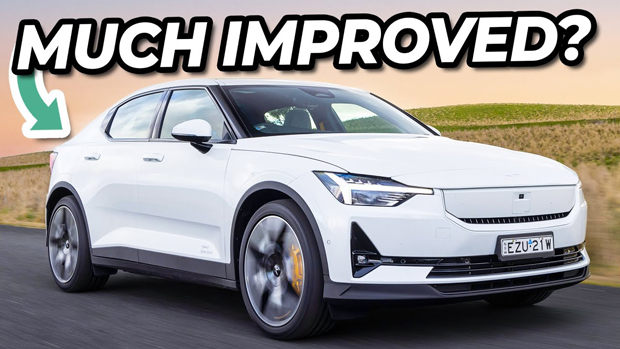
It’s getting pretty heated in the electric vehicle market and there is no further proof of this than the huge leap forward and significant reengineering the Polestar 2 has taken with what might seem a mere facelift.
There is competition on all fronts and in all segments – the race is truly on to build the most efficient, most powerful and also the longest driving electric vehicle for consumers.

On one side of things, we have the luxury EVs which are still very much out of reach for a lot of Australians, and on the other side, new and increasingly attainable EVs are coming into the market from brands such as BYD, Chery, GWM and MG.
But where does Polestar, with its intricate Swedish style and Volvo underpinnings, stand amongst all of this?
I’d say somewhere in the middle. But the Swedish brand is determined to build an electric vehicle that is not only sustainable, but also pushes the game forward in terms of driving dynamics, electric range and getting the most out of lithium-ion battery packs.
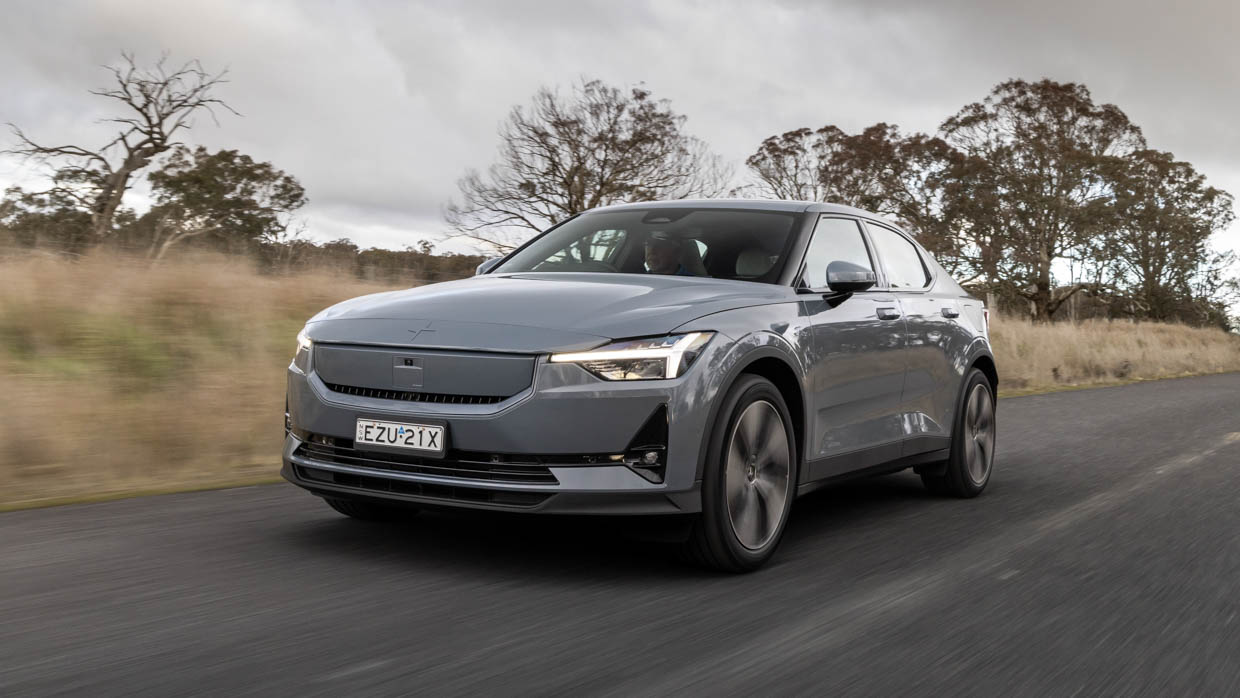
For MY24, Polestar has undertaken a significant update for its electric 2 liftback, but this is no minor tech update or aesthetic facelift. Polestar is here to mean serious business.
The Polestar 2, in single-motor guise, has turned the tides by switching from front-wheel drive to rear-wheel drive – a change in complexity that is rarely seen in modern cars. It’s a radical move for what is essentially a mid-lifecycle model update.
BMW’s switch from rear- to front-wheel drive for its 1 Series most recently is one of the only other examples of drivetrain switching that I can think of – but that required a whole new generation of vehicle and platform change to achieve.
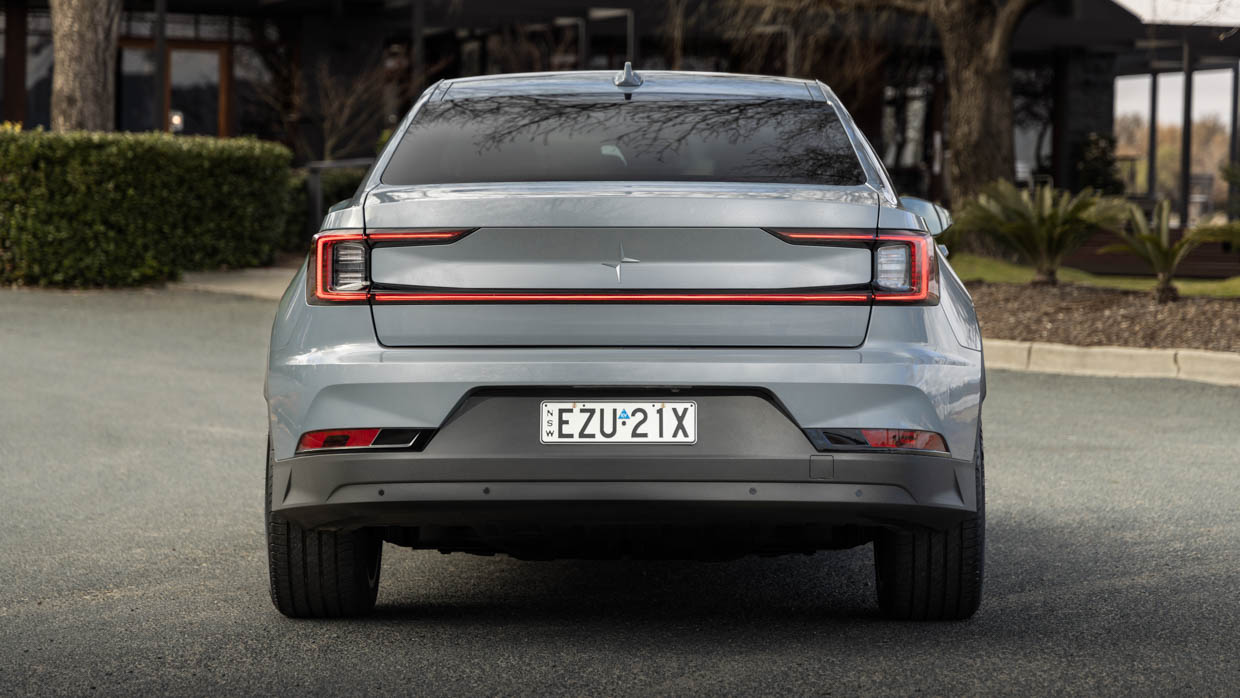
There are a few reasons for this change, but Polestar says it’s largely due to making the 2 more of a driver’s car than before, but also to aid efficiency.
Updated electric motors feature, which are now more powerful than before, while the lithium-ion batteries are updated too, enhancing overall driving range.
The dual-motor variants have also had major tweaks, with a more rear-biased setup than before to achieve a roughly 40/60 percent torque split front to rear. Power for the long-range dual-motor variant has now pushed to a significant 350kW, or roughly the same outputs as the current base BMW M3 sedan.
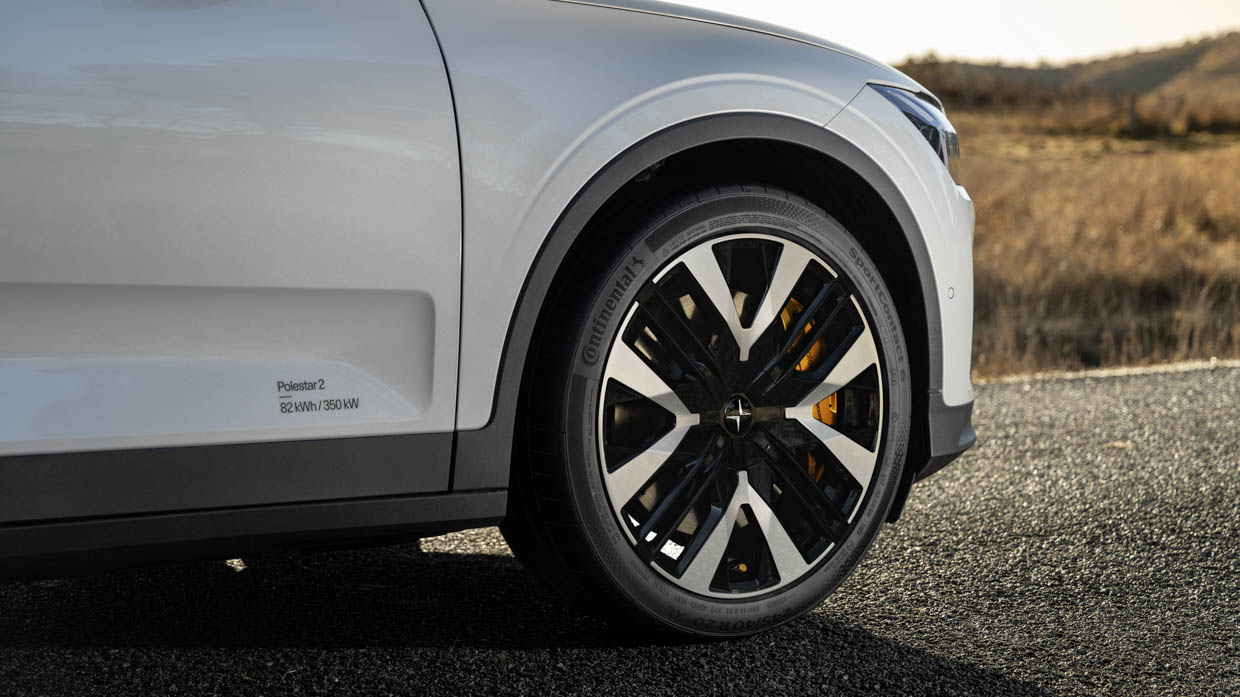
However, there is a but…
Entry pricing for the 2 sedan is now up $3500, putting the base standard-range single motor at $67,400 before on-road costs, or exactly $10,000 more than a base Tesla Model 3. Pricing now tops out at $85,400 for the long-range dual motor with performance pack.
The model we’ll be testing in this review, the long-range single motor, is currently priced at $71,400 before on-road costs.
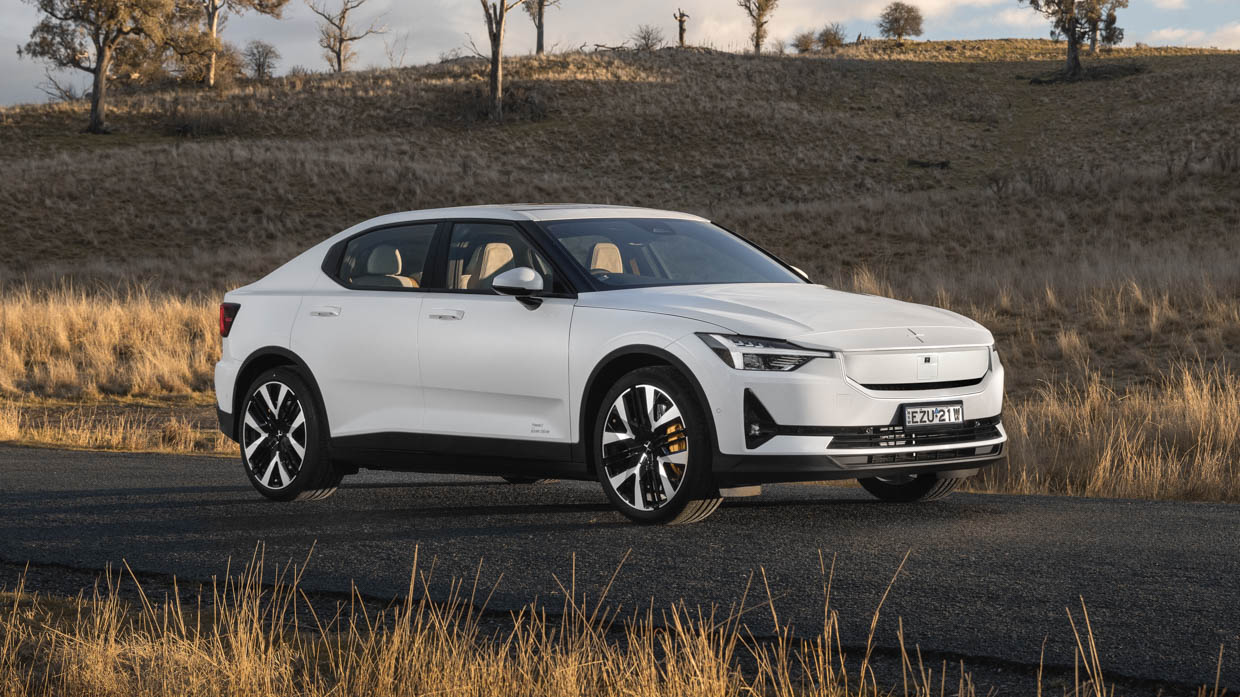
But how is this updated car presented now, and how does it feel and drive? And most crucially, how does it now position itself against its core competitor, the Tesla Model 3?
We’ve been lucky to get a first drive of the Polestar 2 long-range single-motor variant, so buckle up as I take you through the new 2 for 2024.
In terms of features and options, the Polestar 2 is well specified even in base guise. However, our long-range single motor includes the following features as standard:
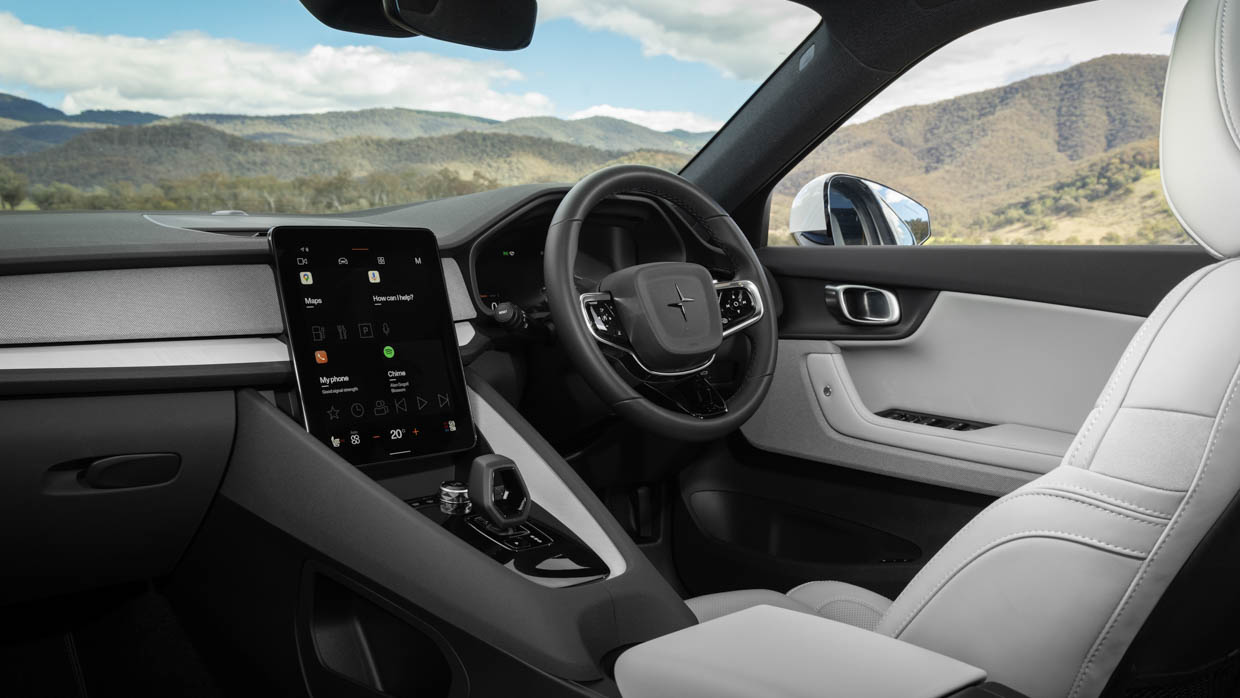
A $6000 Plus Pack further adds to this specification and includes:
The vehicle I drove had the Plus Pack equipped, which adds that next level of features that are very much appreciated.
Although the Polestar 2 is by no means a cheap vehicle, for an electric car in this market it’s well appointed for the price.
Polestar launched its updated 2 sedan in Canberra which is, to the surprise of many, the home of some of the best driving roads in Australia. We were able to sample the updated vehicle through the Canberra city streets before taking off into the winding hills.
The Polestar 2 in Long Range RWD guise has seen its battery capacity jump from 78kWh to 82kWh in size (79kWh usable). Range is now up to a claimed 654km (WLTP) as a result.
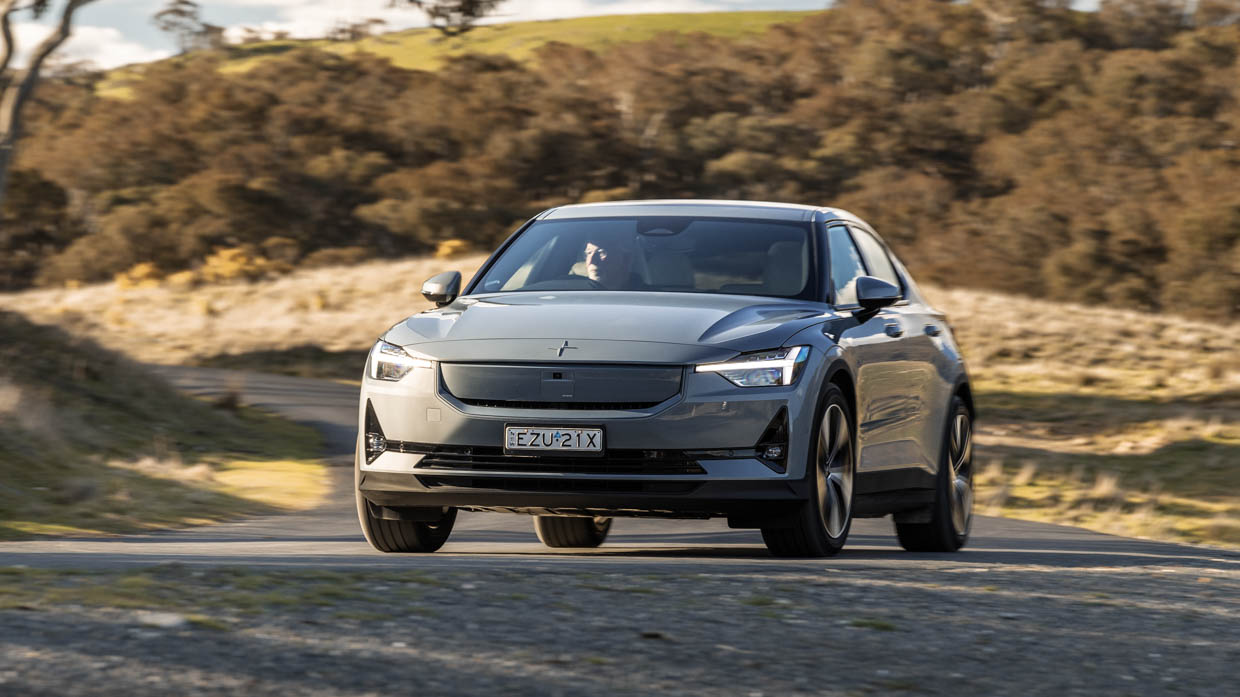
This spec has also had a power boost and produces 220kW/490Nm. That’s 30kW/90Nm more than an ICE-powered BMW 330i.
If you’re looking at the broader Polestar 2 spec sheet and those flagship 350kW/740Nm numbers seem to tower over the base figures, let me tell you that you won’t be disappointed with the new rear-drive single motor car.
There is plenty of grunt under your right foot to launch the 2 from 0 to 100km/h in around 6.2 seconds for the rear-driver according to Polestar – stay tuned for a Chasing Cars performance test in the near future.
Like many EVs, the power and torque delivery is instant, and before you know it you’ve hit the national speed limit.
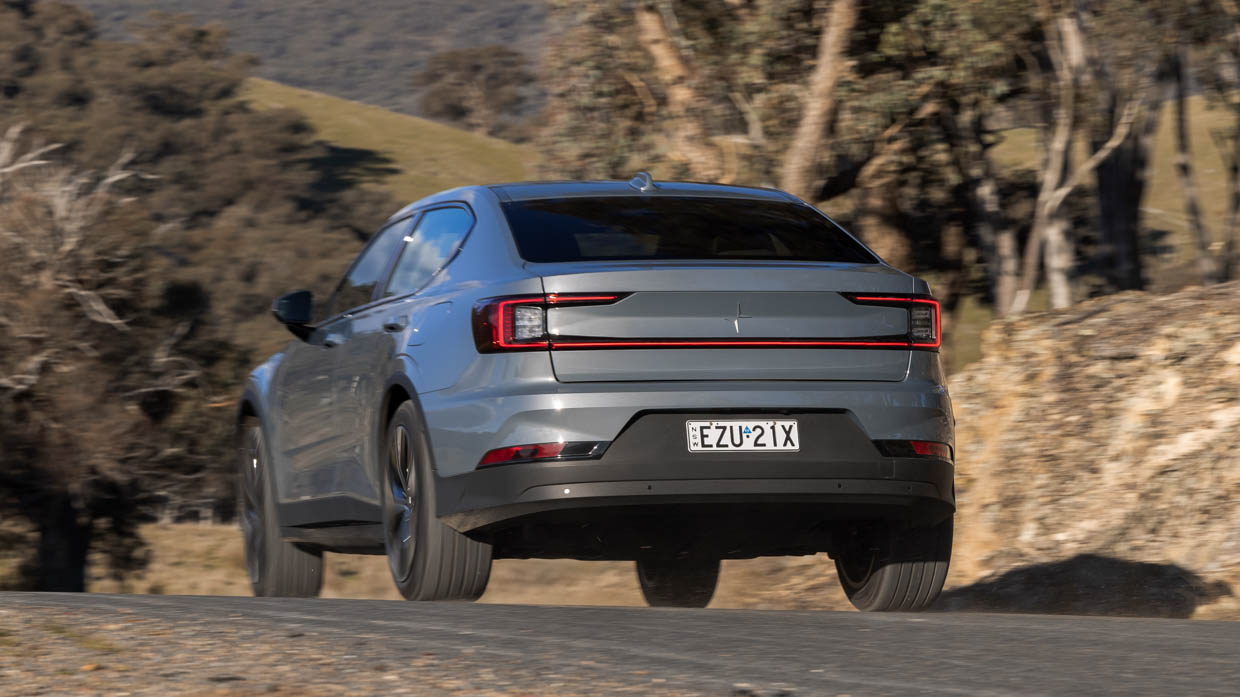
The ride of the update Polestar 2 feels much improved to the pre-update car. The suspension strikes the perfect balance of feeling sporty if without rattling your teeth out of your head. Around town, the ride is composed and refined and settles easily after large bumps or irregularities to the road surface.
Once out of the town where the road speed picks up, the Long Range rear-drive Polestar feels stable at higher speeds. The driving position and seats are almost perfect and that helps you feel connected to the vehicle, which I personally love.
Through long and fast sweeping corners, the 2 is well balanced and there are serious levels of grip here. You can use the throttle with confidence to power out of corners, rather than the older car dragging you out, instead.
The steering is also well weighted and pin-point accurate – you can place the car exactly where you want it every single time.
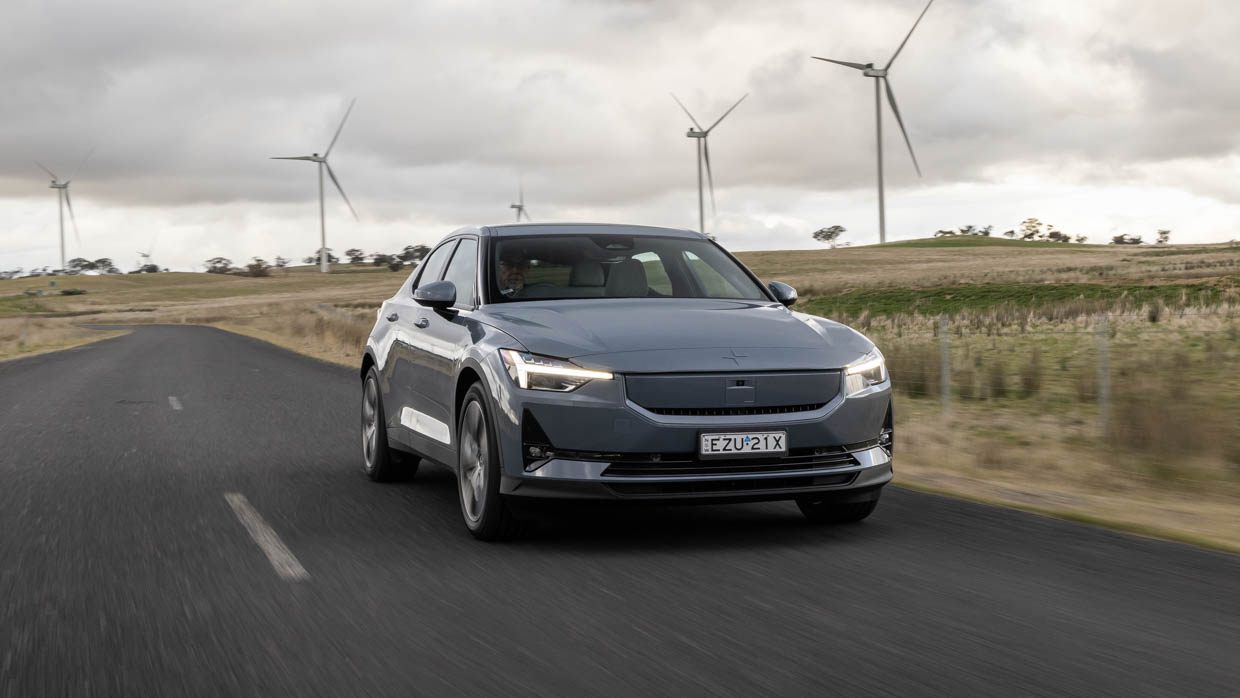
Even if you happen to hit a big bump mid corner, the Polestar just powers through without so much fuss. I’m not sure you’d get the same levels of higher-speed refinement in a Model 3 or Y.
While you won’t necessarily feel the change from the front-drive to rear-drive at slow speeds around town, when powering graciously through corners, you most certainly will feel the difference.
The 2 feels engaging, enjoyable and fun to drive – something that some manufacturers have really struggled with as electric vehicles come into the market.
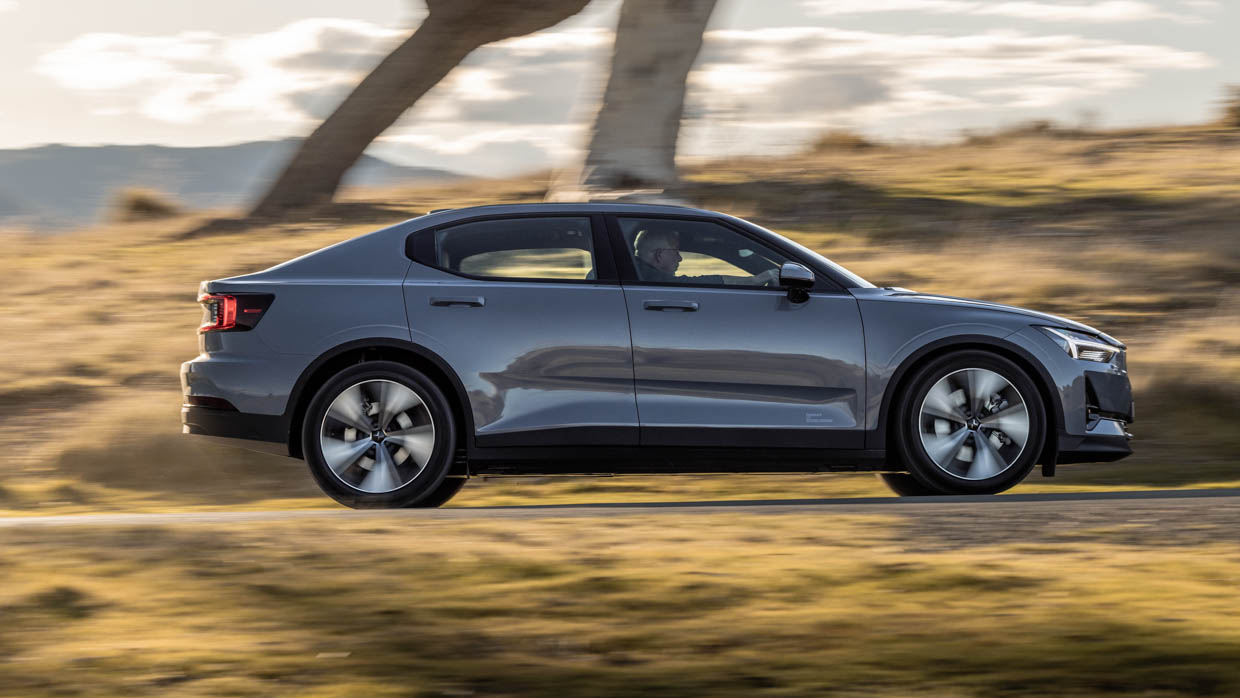
I love the silence of the 2 – no annoying fake engine sounds or ridiculous motor ‘whirring’ sounds. The 2 just rips down a road with no theatrics at all, and although I do love the sound of an internal combustion engine, the Polestar offers a calming driving experience.
When the spirited drive comes to an end and you step out of the Polestar 2, you haven’t built up a sweat at all. It’s a calm yet incredibly silent and effective kind of fun.
Polestar executives were clear in their brief to the Australian press that they wanted their refreshed liftback to be more of a ‘driver’s car’ and I think they may have just achieved that.
Sitting inside the Polestar 2 is like going to IKEA or the Apple store – the interior space screams minimalism, and I think it’s beautifully done.
Interior materials in the Polestar 2 are not only good to look at, but they feel premium and are also of a high quality. Sustainability plays a big part in Polestar 2, with our Plus Pack car gaining recycled wood trim, which is a pleasant touch.
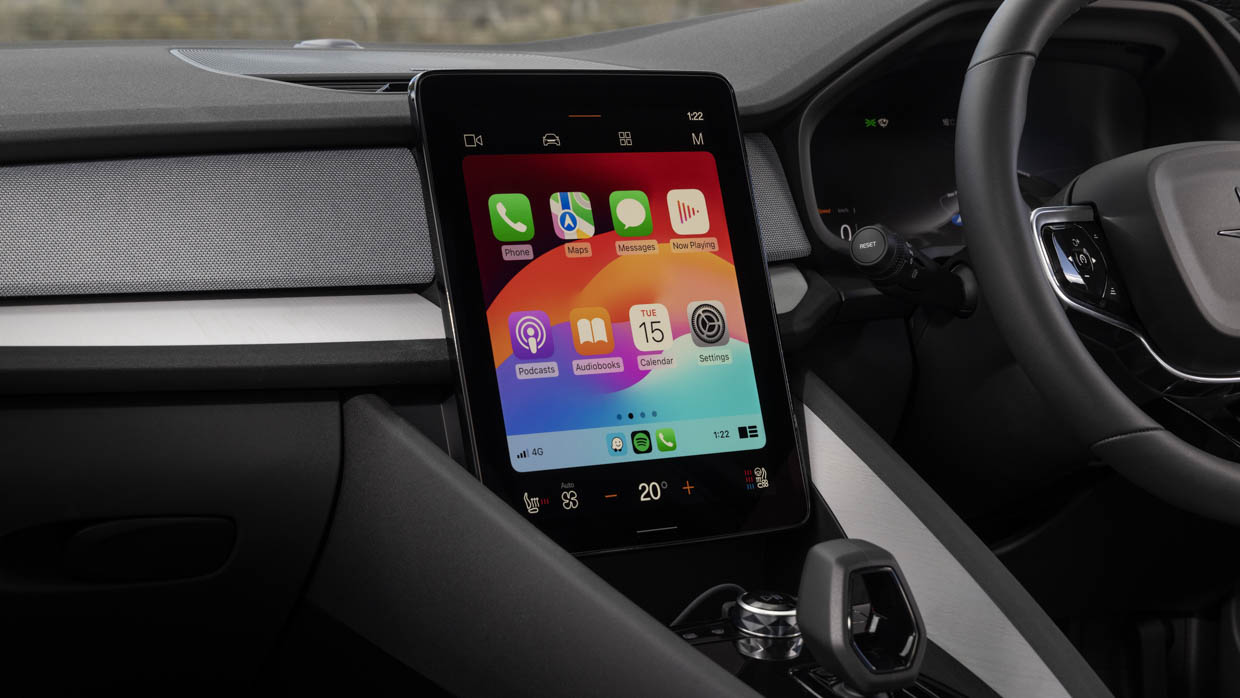
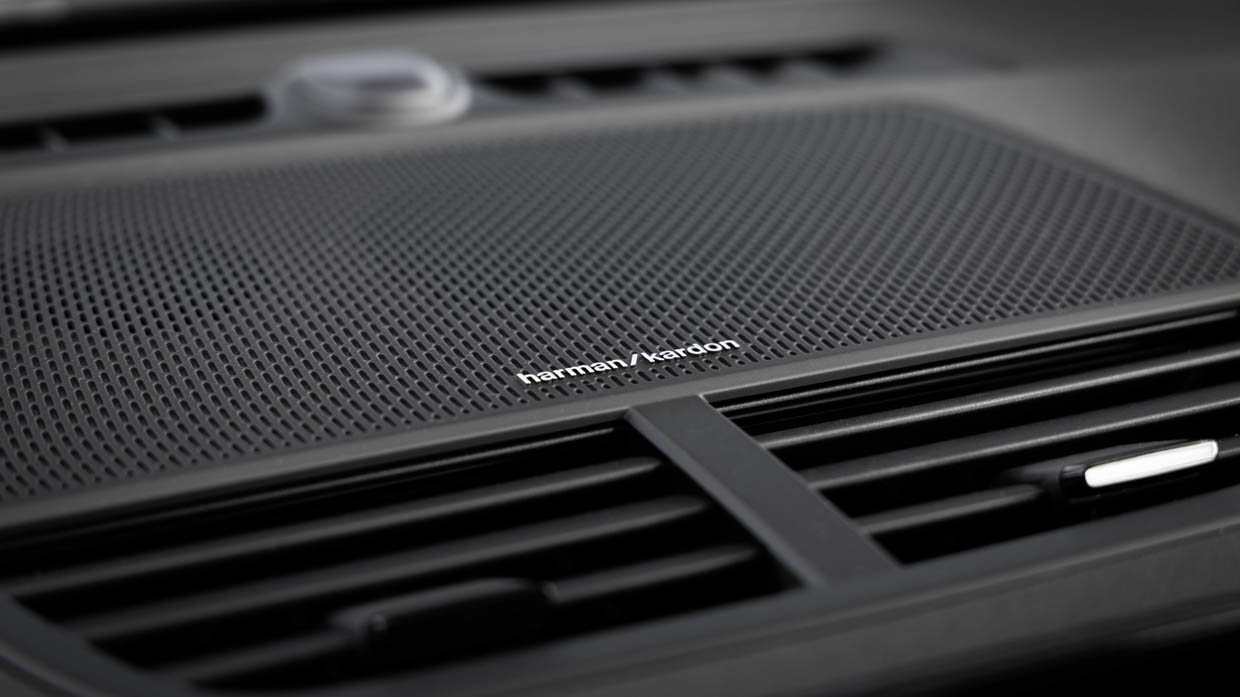
There are a mixture of textiles at play inside the 2, none of which feel cheap and nasty. This is a premium-segment car, after all, but the designers have done a very good job with fitting out the interior trim.
Front and centre for the driver is a 12.3-inch digital instrument cluster that is relatively crisp, clean in its design and easy to use. Like before, it provides you with the ability to have Google Maps right inside the screen in front of you, which is a nice touch.
The central touchscreen is a 11.5-inch unit and is portrait in orientation. This screen runs Android Automotive infotainment, much to the dismay of Apple users. But the good news is that an OTA (over-the-air) update has brought wired Apple CarPlay into the mix – problem solved.

The Polestar 2 has an e-sim installed so the vehicle will have an internet connection as long as it has satellite reception. This means you can add your Google account to your Polestar vehicle, add your apps such as Spotify and YouTube, and off you go!
Our Plus Pack car had the optional Harman Kardon sound system, which I tested with some bassy James Blake that sounded crisp, clear and quite powerful to these ears.
The front seats fitted to the car I tested had the optional Nappa leather, which seemed beautifully trimmed and very premium. These are comfortable pews and even do a solid job of holding you in place if you do find yourself on a spirited drive.
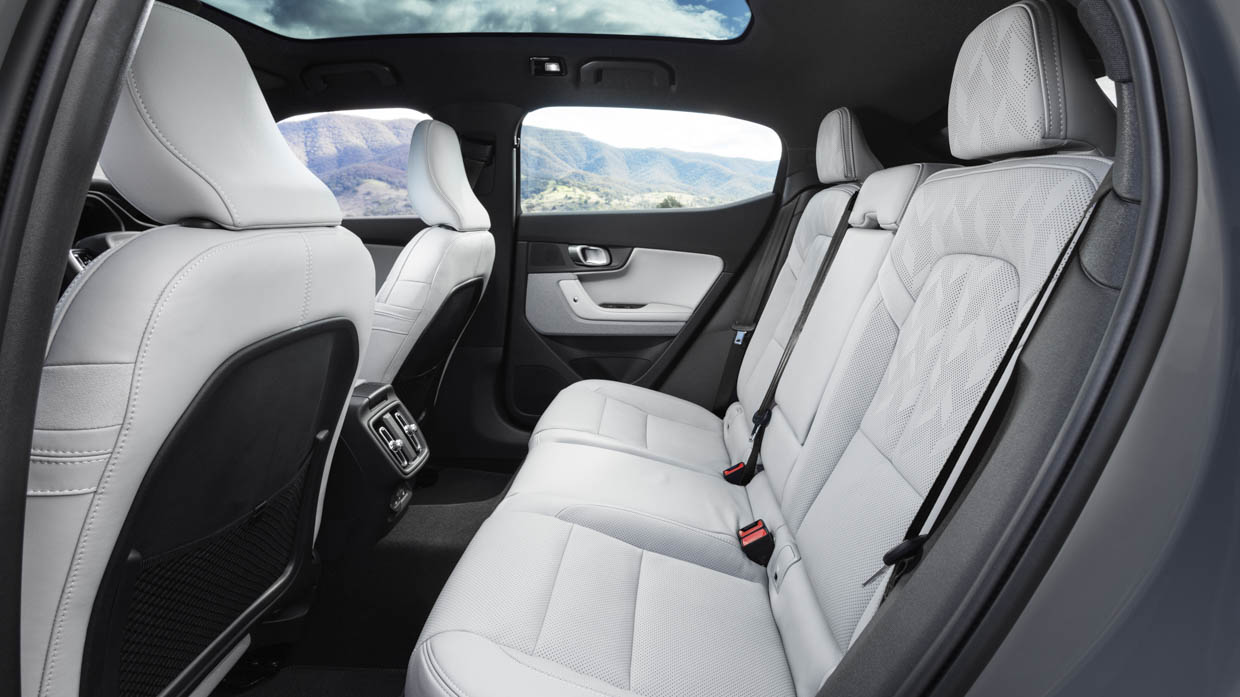
Rear passenger space is pretty good, however larger adults may find it a little squishy for long journeys. Legroom is okay, but headroom is a little restrictive, especially if you’re over 180cm tall.
In the boot, there is a significant 405 litres of storage space back there for your shopping or luggage.
All in all, the Polestar 2’s interior is a stand out and, in my opinion, is one of the nicest feeling and looking cabins on the market.

The 2024 Polestar 2 has a range of safety systems fitted as standard, which includes:
During our short drive, I found the adaptive cruise control worked well and the safety assist systems were generally well tuned, meaning that they were not intrusive or annoying .
The Polestar 2 was tested in 2021 by ANCAP and received a five-star safety rating. It scored particularly well in adult occupant protection with a score of 92 percent, while child occupant protection was rated at 87 percent and 82 percent given for safety assist systems.
The Polestar 2 is covered by a five-year, unlimited-kilometre warranty that also includes an eight-year, 160,000km battery warranty.
For servicing, Polestar offers complimentary servicing for the first five years for the 2 sedan, which is included with the upfront price of the vehicle.
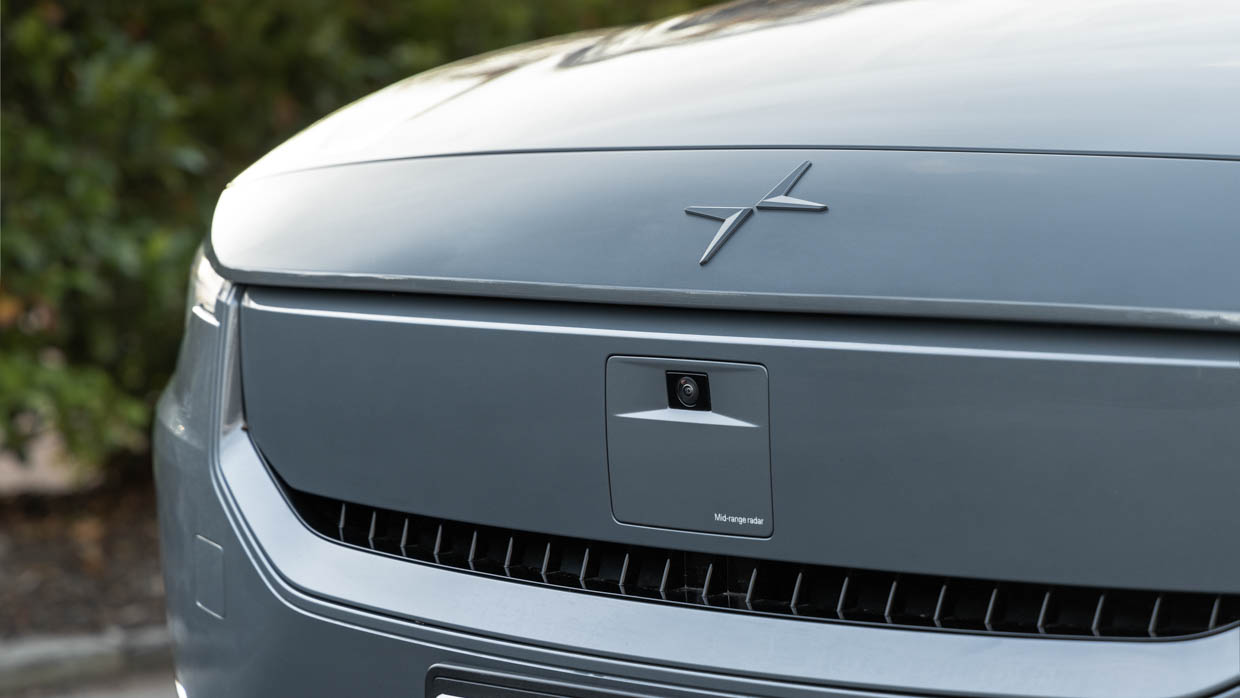
For battery efficiency and range, we saw between 18kWh/100km and 23kWh/100km economy during our drive loop, using the range of regenerative modes. Polestar claims a figure of 14.9kWh-15.8kWh, so the indicated figure is a bit more.
The claimed WLTP range is 654km. Polestar says that the peak charging rate for long-range batteries is 205kW DC.
As always, we’ll put these figures to the test to find out the real-world range in a Chasing Cars range and charging test at a later date.
The 2024 Polestar 2 has come a long way with this significant update. The Swedish-designed, Chinese-built electric vehicle is proof that you can completely reinvigorate an electric model with better efficiency, more performance and new rear-drive characteristics.
There’s so much to love about the updated Polestar 2. It rides well, has plenty of power even in rear-motor guise, it has a thoughtful and stylish interior, good ergonomics and perhaps is even a bit of a driver’s car.
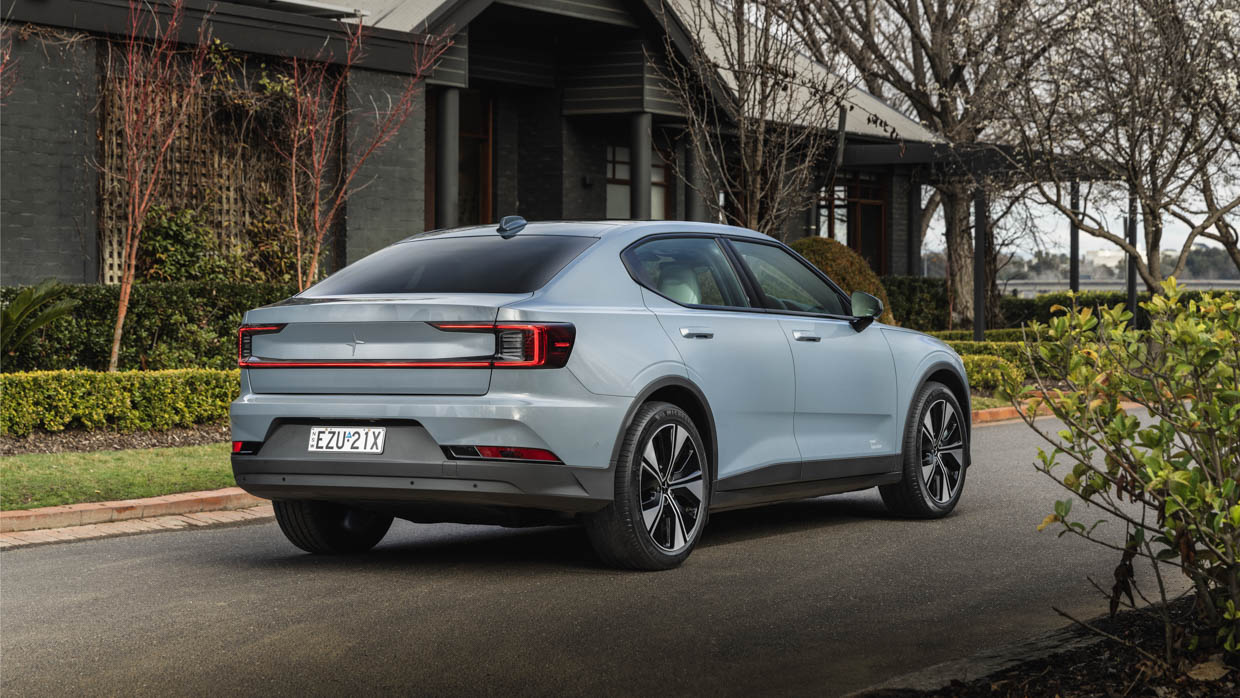
Getting into the 2, it’s an engaging and all-encompassing drive – that can’t be said about some other EVs on the market.
Although we are seeing some recent dynamic examples with the likes of the rear-driven MG4 hatch, there are many EVs out there which simply don’t drive that well, and the Polestar 2 is a notable exception to this.
During our time in the Long Range dual motor with the performance pack fitted, it left us breathless with its radical performance.
But is it all blue skies and happy days? Not quite. The Polestar 2 struggles to compete on price, and in standard range single motor guise, is still $10,000 more than a base Tesla Model 3.
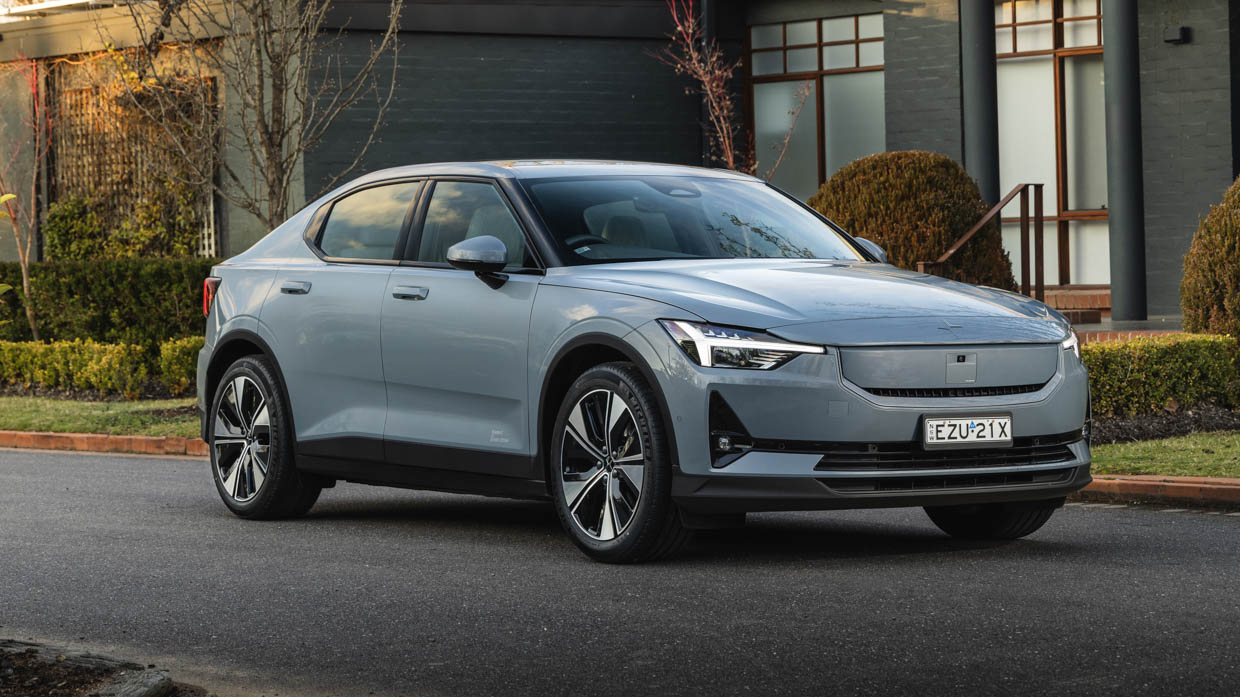
Is the updated Polestar 2 worth that extra $10,000? For the way it drives and looks and how it feels on the inside, I honestly think it does.
In both New South Wales and Queensland, there are some very positive EV rebates, with the base model Polestar 2 falling under the necessary threshold.
If you happen to live in Queensland, you can get $6000 back from the Government on a base Polestar 2, making it a $61,400 car. Taking this into account, the Polestar 2 is a whole lot of value for that amount of money.
All in all, the 2024 Polestar 2 takes a big leap forward, positioning itself as one of the best driving electric cars you can currently buy in the Australian new car market.
Key specs (as tested)
About Chasing cars
Chasing Cars reviews are 100% independent.
Because we are powered by Budget Direct Insurance, we don’t receive advertising or sales revenue from car manufacturers.
We’re truly independent – giving you Australia’s best car reviews.
The estimate provided does not take into account your personal circumstances but is intended to give a general indication of the cost of insurance, in order to obtain a complete quote, please visit www.budgetdirect.com.au. Estimate includes 15%^ online discount.
^Conditions Apply
Budget Direct Insurance arranged by Auto & General Services Pty Ltd ACN 003 617 909(AGS) AFSL 241 411, for and on behalf of the insurer, Auto & General Insurance Company Limited(ABN 42 111 586 353, AFSL 285 571).Because we don’t know your financial needs, we can’t advise you if this insurance will suit you. You should consider your needs and the Product Disclosure Statement before making a decision to buy insurance. Terms and conditions apply.
Indicative quote based on assumptions including postcode , 40 year old male with no offences, licence suspensions or claims in the last 5 years, a NCD Rating 1 and no younger drivers listed. White car, driven up to 10,000kms a year, unfinanced, with no modifications, factory options and/or non-standard accessories, private use only and garaged at night.
^Online Discounts Terms & Conditions
1. Discounts apply to the premium paid for a new Budget Direct Gold Comprehensive Car Insurance, Third Party Property Only or Third Party Property, Fire & Theft Insurance policy initiated online on or after 29 March 2017. Discounts do not apply to optional Roadside Assistance.
2. Discounts do not apply to any renewal offer of insurance.
3. Discounts only apply to the insurance portion of the premium. Discounts are applied before government charges, taxes, levies and fees, including instalment processing fees (as applicable). The full extent of discounts may therefore be impacted.
4. We reserve the right to change the offer without notice.